How Do Elephants Find Water In The Dry Times?
on Aug 29, 2023Floods and droughts are no strangers to nature, as these are natural events that will come and go. All animals need water to survive; some have learned fascinating ways to find water even in the driest conditions. An African elephant needs to drink about 70 to 100 litres of water daily, but can easily consume between 100 to 200 litres. Let’s look at some interesting ways an elephant has adapted to find water.
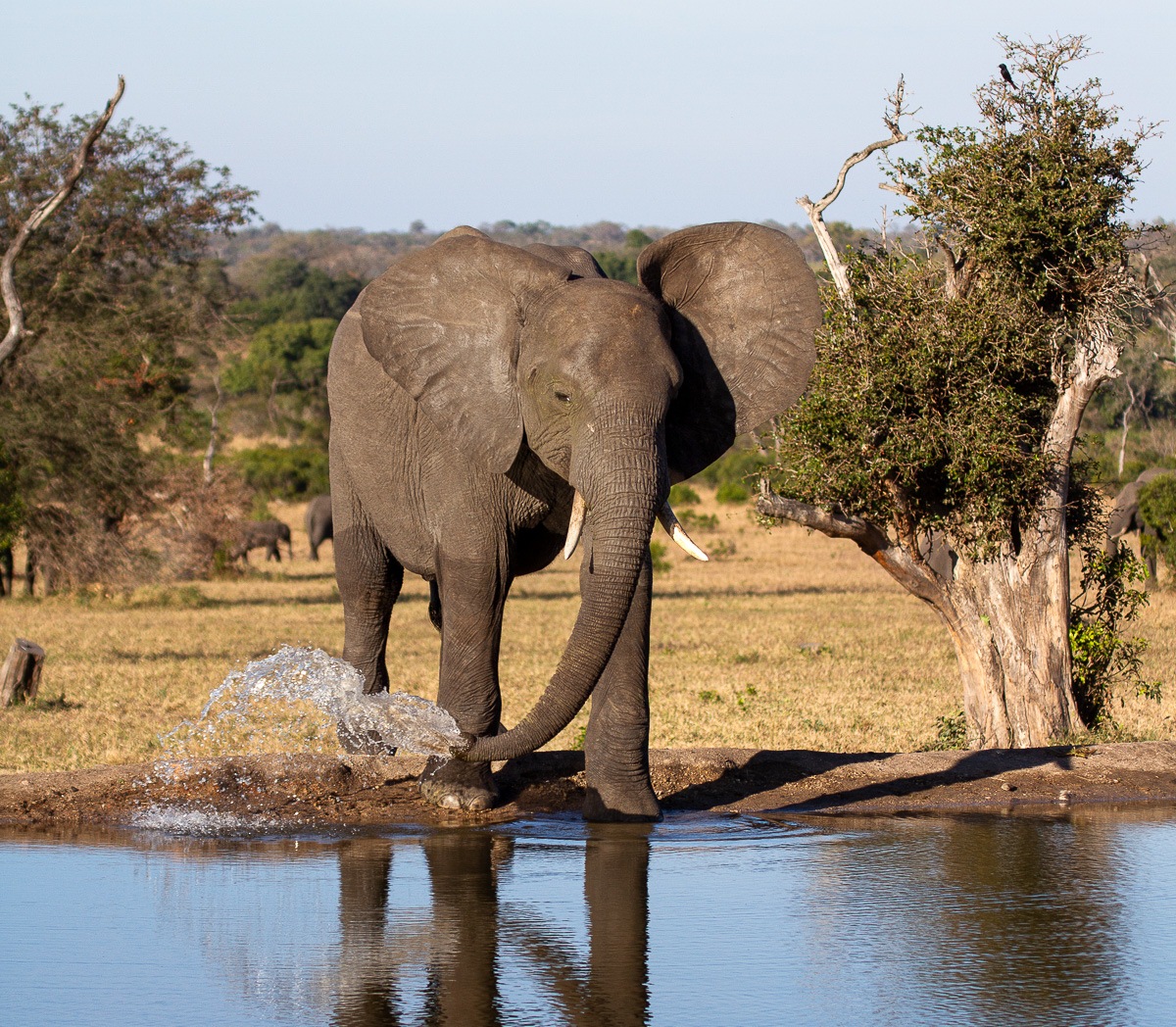
First, let’s look into how elephants use their trunk to drink water. If you dissected an elephant’s trunk, it would look more like a tongue than a nose. Trunks and tongues are organs called muscular hydrostats, meaning they are almost entirely made of muscles. Elephants have about 40 000 muscles in their trunk, and we humans only have about 650 in our entire body. The combination of precision and strength is remarkable as they don’t have any bones or joints to help them operate their trunk. But their trunk is still a nose and can dilate and expand their nostrils to suck up 8 to 12 litres of water which they then squirt into their mouth.
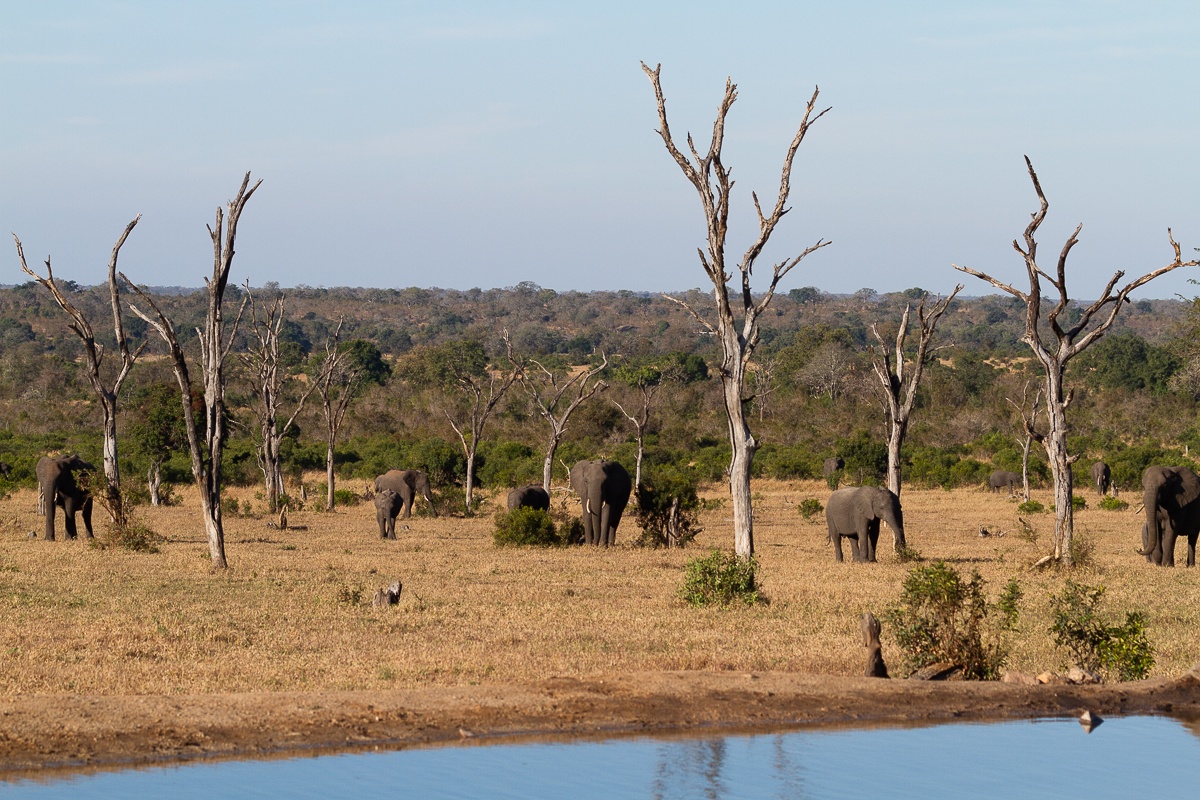
All the pressure is on the matriarch to find water for the rest of the herd. She uses various methods to help find water. If the weather conditions become very dry for an extended period, she will migrate them to the closest area where they can find water. She will rely on three different methods to find water from afar. Her memory, sense of smell and communication with others. Elephants are known to never forget, which is achieved by a very large temporal lobe and well-developed cerebrum and cerebellum. She can remember where she had previously found water, even if this was when she was still a baby and the previous matriarch had led the herd to water.
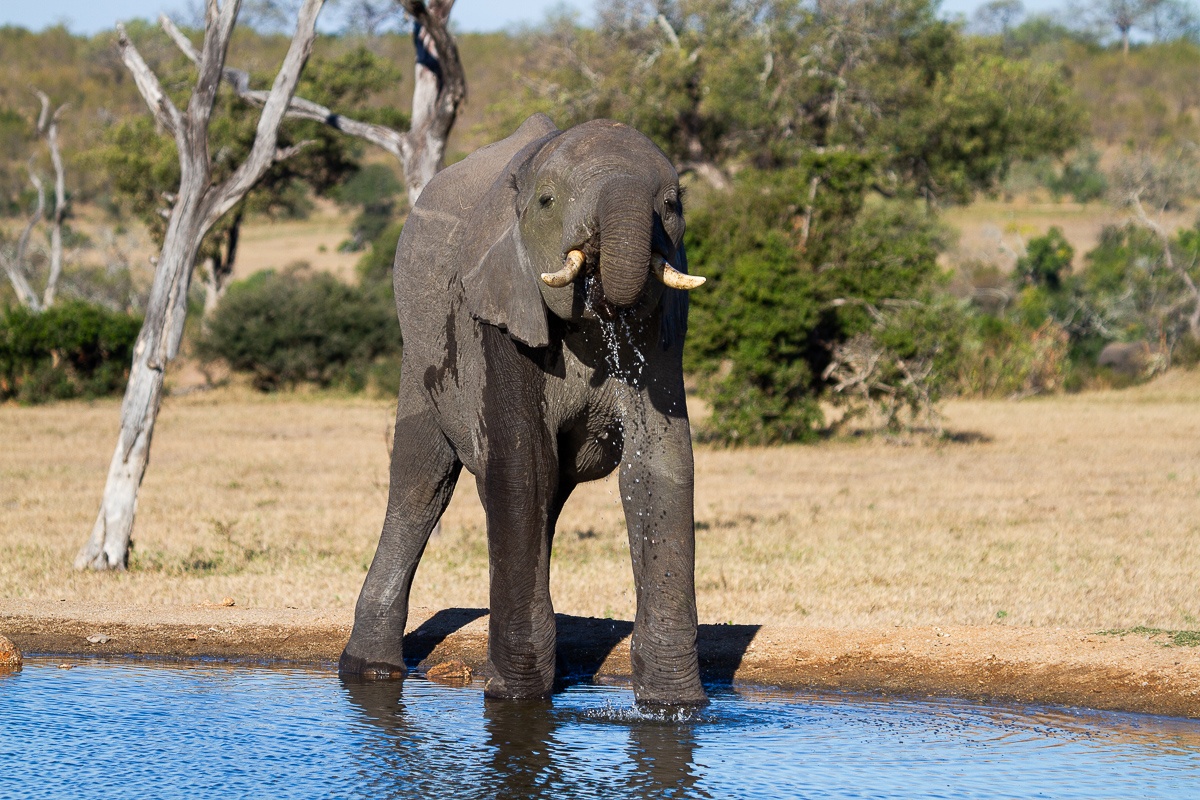
They sometimes dig for water when they cannot find fresh water. This helps them and other animals when they dig into dry riverbeds or other spots to uncover water that is lurking below the surface. They will create very big holes by digging with their feet, trunks, and tusks, working hard until they reach a good water supply. When the elephants are finished with the water, other animals will take advantage of whatever is left behind. These holes also provide the elephants with mud, which they scoop up with their trunk and spread over their skin as protection from the scorching sun and biting insects.
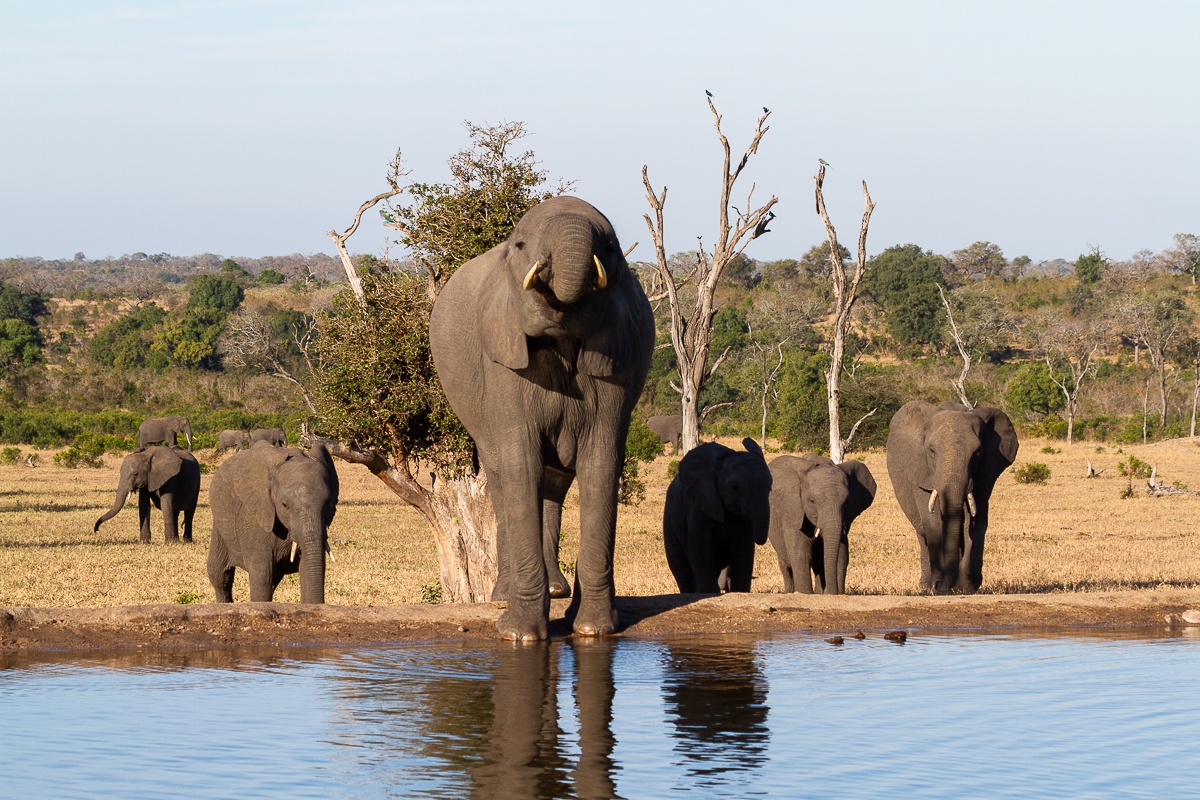
An elephant’s sense of smell is incredible as it has about 2000 olfactory receptors, whereas a bloodhound only has about 800 olfactory receptors. They can detect water sources up to 19.2 km (12 mi) away. Their nostrils are located at the tip of the trunk, and they use this for smelling and breathing. The elephant's sense of smell is in constant use; while they use their trunk to move back and forth, they detect new scents and information. Once a scent is drawn in through the nostrils, a series of seven olfactory turbines are located in the nasal cavity. Turbinals are curls of bone that will have millions of olfactory receptor cells associated with them.
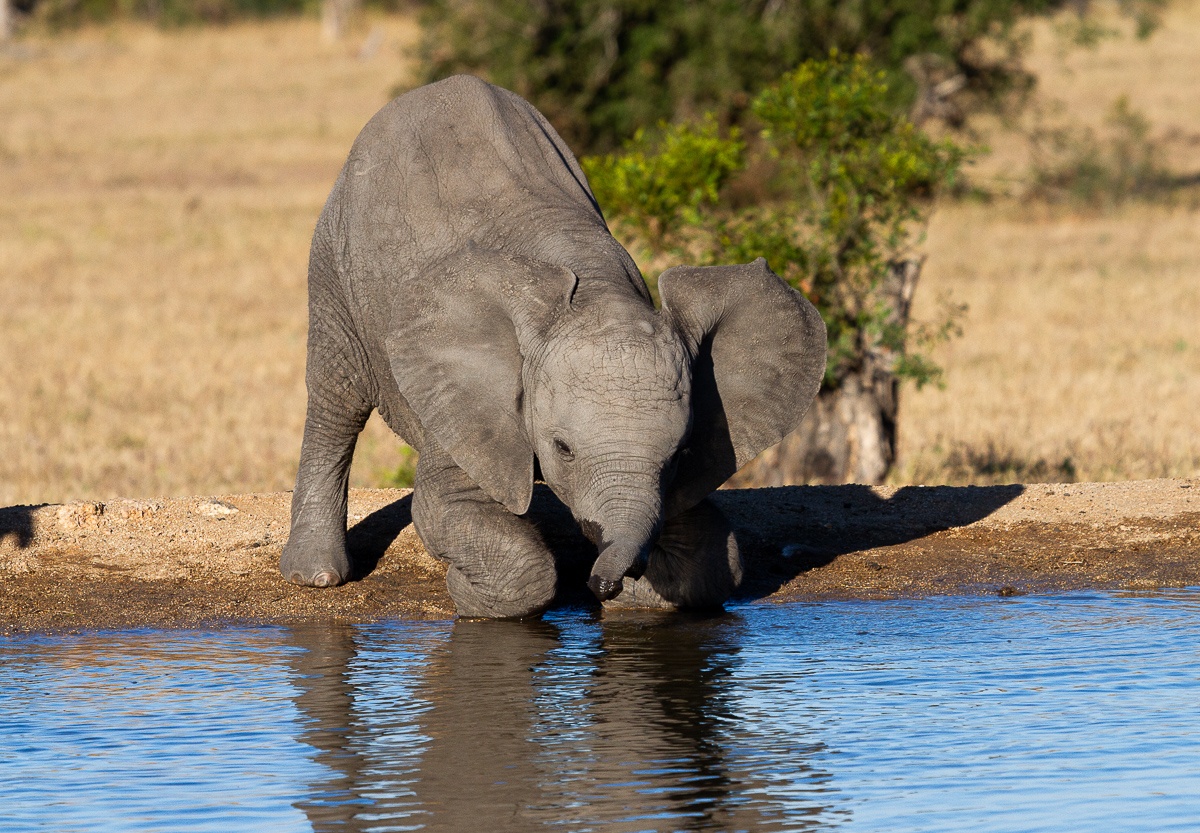
Elephants will communicate with one another in different ways, but one of the most effective ways is through infrasonic calls. They have excellent hearing and can detect sounds as low as 14 Hz to 16 Hz (humans cannot go lower than 20 Hz) and as high as 12 000 Hz (a human's highest range is 20 000 Hz). Elephants use these infrasonic sounds, sounds humans cannot hear as it is lower than our hearing range, to communicate over long distances. Research has shown that elephants can recognise calls and voices of particular individuals from 1 to 1.5 km (0.6-0.9 mi.) away. The ears of the elephant are used to funnel in sound waves from the environment, contributing to its keen sense of hearing. In general, animals with large heads and wide-set ears are better adapted for hearing lower frequency sounds because the larger skull encompasses longer ear canals, wider tympanic membranes (membrane that separates the middle ear from the exterior), and larger middle ears.
So next time you see an elephant drinking water, it may not be coincidental that they just stumbled upon the water…
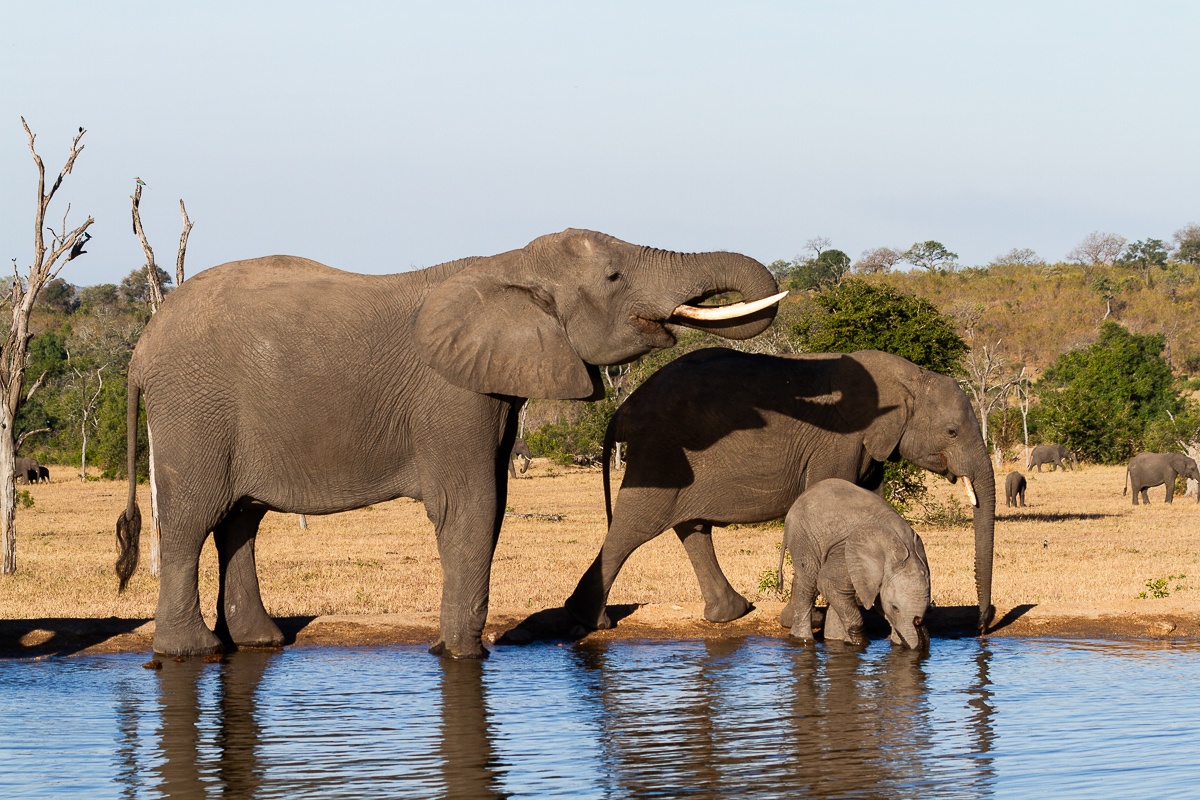
Blog by Dieter Lategan (Little Bush Camp Ranger)







